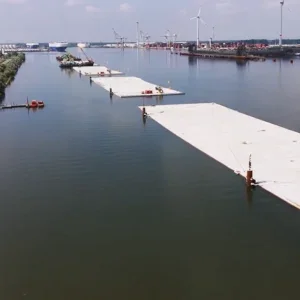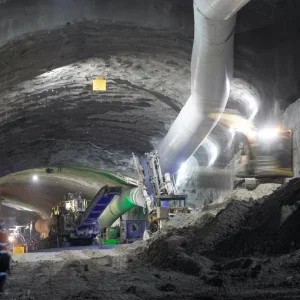The scheme that began two years ago involved the complex construction of interceptor sewers, stormwater storage tunnels, 6km of tunnelling, rising mains and 13 No. access shafts, designed to upgrade the city’s aged sewer system. A team of 200 engineers have been working collaboratively around the clock to deliver the scheme, often working 100ft (30m) below the city streets.
Once fully operational, the new sewer network will intercept the flows and divert them 10km westward, via a new pumping station, to the town’s main treatment works at Clifton Marsh. A 2.5km stormwater storage tunnel and two linked shafts will regulate the flow of up to 40,500m³ of stormwater on its route to the treatment works.
Andy Parker, KMI+ contracts managers said: "The innovative solutions employed on the project have included one of the most complex grouting and dewatering systems ever installed, and the use of a German pipe thrusting technique never before used in the UK. The technique achieved record daily thrust lengths and proved to be a cost effective solution in the challenging conditions.
"The whole scheme has overcome many civil engineering challenges, but teamwork and innovation have been central to the delivery of the project. Prior to work starting we knew that the sewer upgrade would be complex, the existing century-old combined sewerage system regularly exceeded capacity, with frequent flood-induced overspills direct into the river."
Carl Sanders, senior project manager at United Utilities, added: "The tunnel is very much the lynch-pin of the whole Preston project. It is the largest tunnel which acts as a collector for all the other tunnels in the system before rainwater is pumped to Clifton Marsh wastewater treatment works."
The project is part of United Utilities overall unsatisfactory intermittent discharge scheme in the Preston area to improve the quality of the Fylde Coast bathing waters and designated shellfish beds in the Ribble Estuary.







